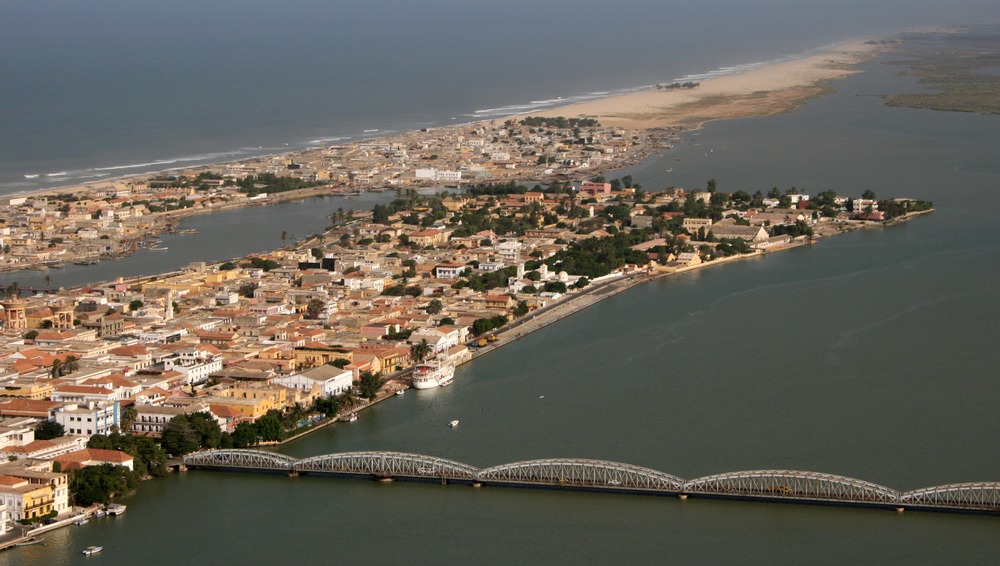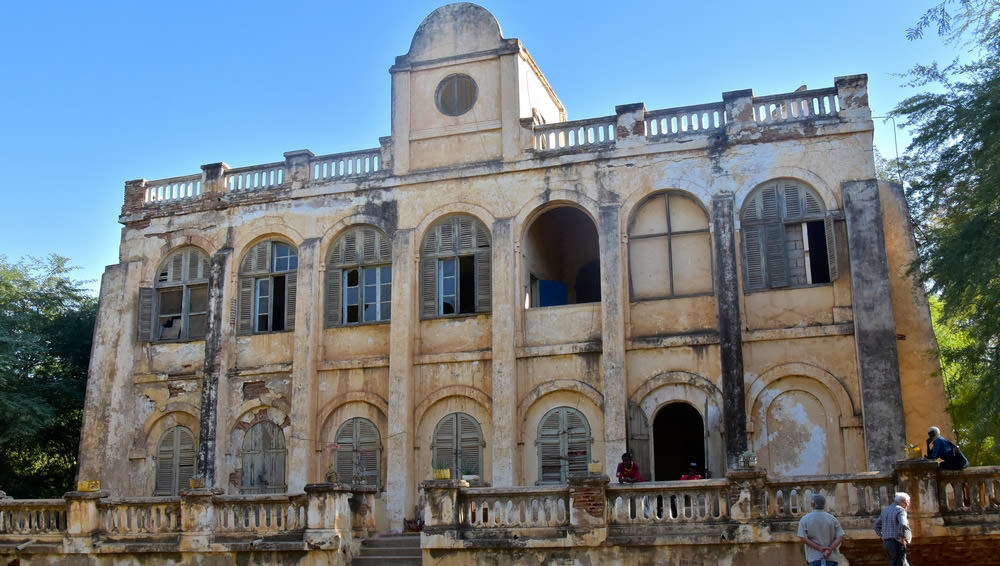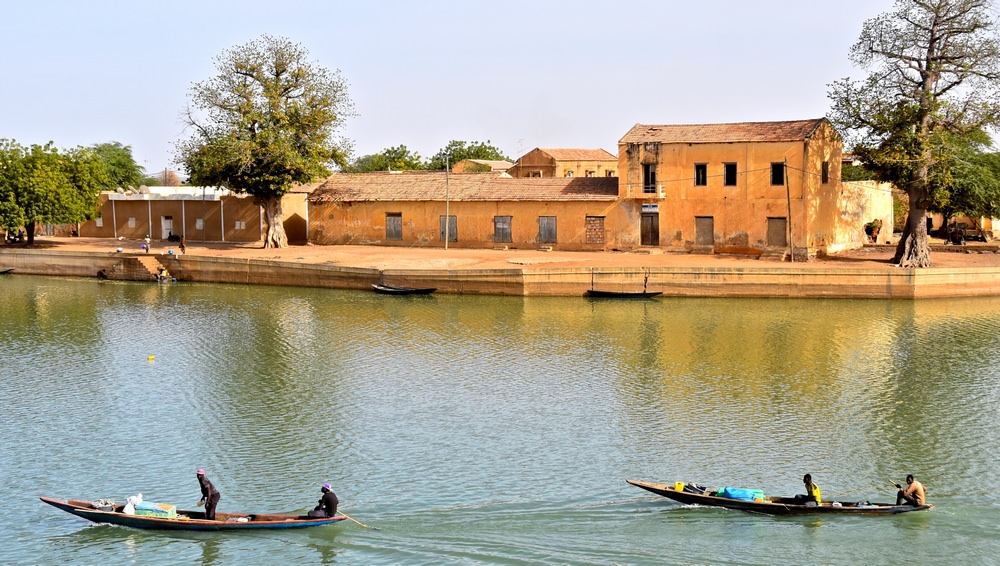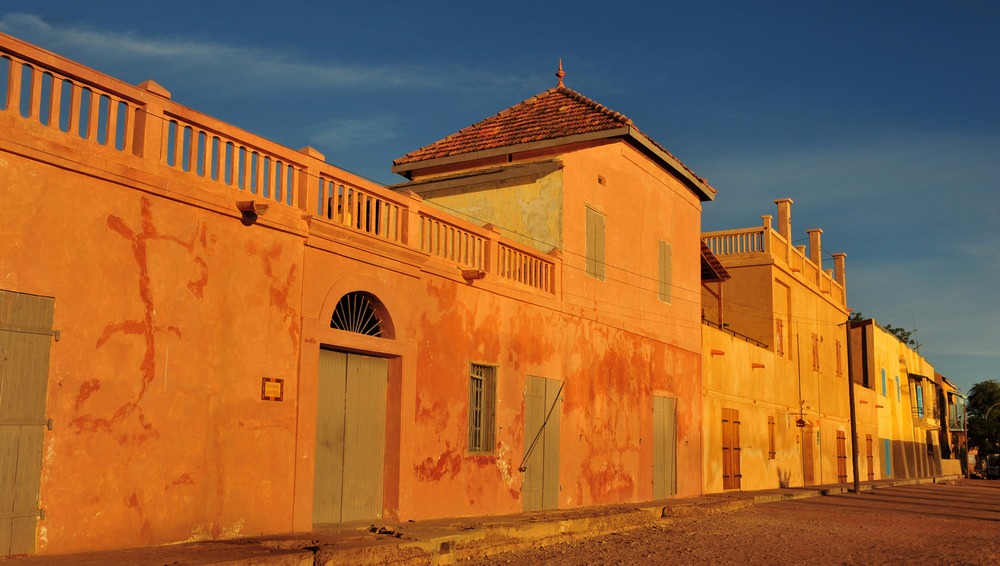The Senegal River Region

The Senegal River Region
The Senegal River marks the border with Mali to the east and Mauritania to the north. In its Senegalese section, it is a veritable link between the gates of the Sahara and the Atlantic Ocean.
The River region is a real tourist attraction, first and foremost from a geographical point of view, with a diversity of landscapes, depending on whether you move closer to the ocean or up towards the semi-desert zones. The valley between Dagana and Bakel is the country’s main alluvial plain and the most fertile farming area.
Historically, this was a central region that witnessed the First Kingdoms, Islamization and colonization, with its various trading posts scattered along the river. Let’s take a closer look at the towns we pass through on the Bou el Mogdad:
A Unesco World Heritage site since 2000, Saint-Louis was the first trading post built by Europeans in West Africa. The old buildings, with their warm colors and wrought-iron balconies, bear witness to the colonial era, when the city held very important functions. Indeed, Saint-Louis was proclaimed capital of French West Africa in 1895. Other vestiges of this era include the church, the mosque, the barracks, the courthouse and the large hospital.
Today, Saint-Louis has retained its friendly village atmosphere, and the term Teranga seems particularly appropriate. A city of culture, Saint-Louis hosts the world-famous Jazz Festival, which brings together groups and people from all over the world every year.

Saint-Louis, the Senegal River, the Atlantic Ocean
Richard-Toll is particularly famous for its “Folie du Baron Roger”. Governor of Senegal from 1822 to 1826, Baron Roger commissioned the construction of this astonishing building, with a trial garden beside it, in order to undertake agronomic research in the Walo region. The management of this garden was entrusted to a gardener named Richard, hence the name of the town, Richard-Toll (in Wolof, Richard’s field). Inside the estate were buildings, a brick kiln, an oar and sail barge, a noria, a seesaw, a few oxen, around thirty workers and an armed post. By September 1822, banana, orange, guava, sugar cane, coffee and cotton plants were being grown.
In 1945, to alleviate the food shortage, the French government decided to grow rice in the Senegal River delta. Thousands of hectares of land were equipped with an irrigation system. This same system is used today by the Compagnie Sucrière Sénégalaise, which produces 100,000 tonnes of sugar a year. This is the country’s largest agro-industrial company and its biggest employer, with 8,000 employees.

“La Folie du Baron Roger” in Richard Toll
Also known as the “capital of the Walo”, Dagana bears witness to a rich colonial past as a stopover on the river. In 1820, a fort was built to protect trade on the river, as Moorish incursions were frequent.
With the arrival of General Faidherbe, trade flourished and St-Louis-style houses began to be built along the quays. In the 19th century, the gum arabic crisis marked the end of the town’s trading activity.
Today, Dagana has developed irrigated farmland for rice cultivation. Handicrafts here reflect a blend of cultures: Moorish, Wolof and Fulani. Weaving, dyeing, pottery, metalworking and leatherwork are all still very much in evidence.

Dagana dock
Located in the far north of the country, Podor is just a few kilometers from the Mauritanian border. A site of ancient occupation, it was the preferred meeting place between the region’s sedentary populations and the Moors. A strategic trading post during the colonial era, the French built their first fort in 1744, restored in 1854 by General Faidherbe after it had been abandoned by the English. The fort was testimony to the French military and administrative control over the Fouta region.
Podor’s quays are also interesting for their line of ochre-walled houses facing Mauritania. Podor was the crossing point for Mauritanian traders transporting millet, gum arabic and amber to Saint-Louis via the river. The area around Podor and its surrounding villages is made up of traditional banco dwellings.
Podor also lies at the foot of the so-called Ile à Morphil, a long strip of land in the Senegal River, particularly renowned for the mosques it houses. A true testament to the Toucouleur empire established in the region, and to El Hadj Omar Tall, an important figure in the struggle against colonial rule.

Podor dock